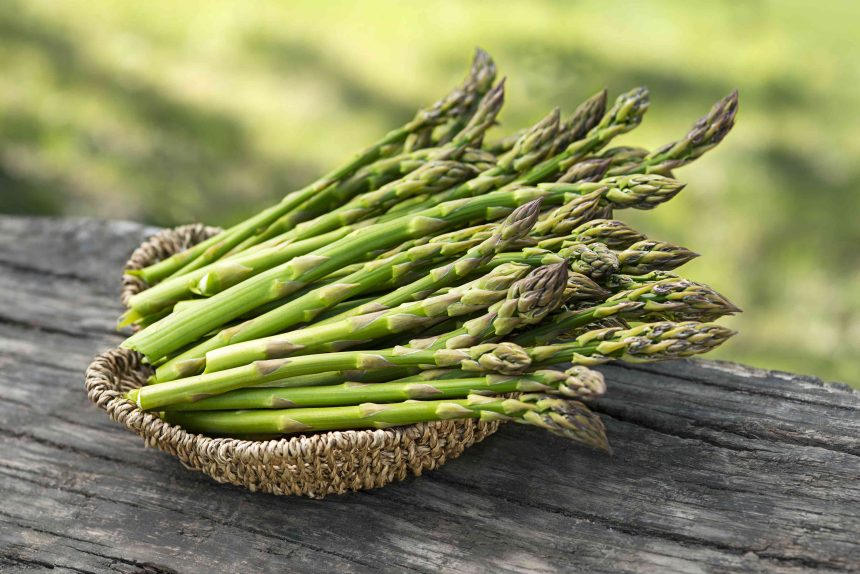Asparagus is the diva of the vegetable patch. It’s elegant, productive, and has a long life span—but it’s also a finicky neighbor. Growing this vegetable is extremely rewarding, but it requires proper planning for success. After all, who wants to work two to three years for that first harvest, only to be thwarted by a troublesome garden mate?
While many plants will complement an asparagus crop, it’s important to avoid those that hinder it. Our experts advise you to think twice about planting these ten troublemakers, so you can enjoy a bountiful harvest for years to come.
- Jen McDonald, a certified organic garden specialist and co-founder of Garden Girls
- Manny Barra, community garden coordinator for the City of Oakland and master gardener at TeachMe.To
- Sarah Akovic, a regenerative farmer and crop production instructor for the Sustainable Agriculture Program at Lorain County Community College
Potatoes
Getty Images
Potatoes may be great to grow in cooler weather, but both potatoes and asparagus are heavy feeders—meaning they require specific nutrients from the soil. You also have to consider their growing times, says Jen McDonald, a certified organic garden specialist and co-founder of Garden Girls. “Both potatoes and asparagus set deep root systems and take a long time to grow before harvest,” she says. “The competition for space and nutrients makes them garden foes.”
Potatoes are indeed the garden’s wild child, according to Manny Barra, the community garden coordinator for the City of Oakland and master gardener at TeachMe.To. “Potatoes are sprawling and utterly oblivious to boundaries,” he says. “To make matters worse, they can attract pests like asparagus beetles, essentially sending a party invite to the neighborhood troublemakers.”
Carrots
DimaSobko / GETTY IMAGES
Carrots are quite versatile in the kitchen, but they need space in the garden to form beneath the soil. If carrots are planted too closely to asparagus—which also requires adequate space—the result will be spindly, weak asparagus shoots or misshapen carrots, says McDonald.
“Although these two plants will compete for nutrients, the biggest problem comes when it’s time to harvest the carrots,” she says. “Pulling mature carrots next to immature asparagus may result in root destruction. The healthiest asparagus grows in undisturbed beds with plenty of sunlight and excellent drainage.”
Onions
YuriyS / GETTY IMAGES
Although they take up little room in the garden, the chemicals from onions might compromise the growth of asparagus. “These chemicals are the reason why onions smell so pungent,” says McDonald. “When allium tissue is damaged during harvest, or because of pest pressure, the chemicals are released. Some plants do very well when planted next to alliums and experience a symbiotic relationship. Asparagus, unfortunately, does not benefit from this.”
Garlic
Aksana Zavadskaya / Getty Images
Garlic might stay in production throughout the winter, but it’s not a smart idea to grow it close to your asparagus. “Asparagus and garlic are like two frenemies who can’t stand each other at a garden party,” says Barra. “These pungent bulbs exude compounds into the soil that can stunt asparagus growth. Plus, garlic demands a lot of soil nutrients, and asparagus doesn’t take kindly to having its buffet table raided.”
Leeks
YuriyS / GETTY IMAGES
Leeks might be relatively easy to grow, but they’re another allium that won’t take kindly to competing with asparagus. “Its root systems overlap with asparagus since they require the same nutrients to grow,” says Sarah Akovic, a regenerative farmer and crop production instructor at Lorain County Community College. “This leads to root systems competing for water and nutrients, resulting in stunted growth.”
Tomatoes
Zbynek Pospisil / GETTY IMAGES
Who doesn’t enjoy fresh tomatoes in their summer salads? “Tomatoes might be the life of the garden with their vibrant fruit, but they bring chaos wherever they go,” says Barra. “They attract pests like nematodes and blight, which asparagus plants would rather not deal with. Tomatoes also hog sunlight and nutrients, leaving asparagus sulking in the shadows.”
Mint
Tendo23 / Getty Images
While mint can expel various pests with its strong aroma, it is invasive and should always be planted in its own bed or pot. It will easily dominate asparagus above ground as it spreads quickly, and it poses even bigger problems beneath the soil. “Mint roots extend via horizontal ‘runners,’ which can quickly overtake an entire garden bed,” says McDonald. “Because mint can grow in sun or partial shade, it is particularly difficult to get rid of once planted near vegetables and herbs.”
Corn
Westend61 / Getty Images
Corn’s towering stalks might look majestic, but they’re not the kind of neighbor asparagus appreciates. “Corn roots and asparagus roots clash underground like two rivals fighting over prime real estate,” says Barra. “To add insult to injury, corn attracts armyworms—a pest that can easily take a detour to nibble on your asparagus.”
Chives
Svetlana Monyakova/Getty Images
Although its lavender flowers make it a pretty addition to your garden, you should avoid planting chives near your asparagus. “Chives have a shallow root system, but they still release chemicals that may be detrimental to asparagus growth,” says McDonald. “It’s easier to err on the side of caution and avoid planting them side by side.”
Shallots
Shallots are a great addition to soups and stews, but they prefer soil with a slightly higher nitrogen content than asparagus. “This may result in slower or stunted growth for one or both crops,” says McDonald. “In addition, planting shallots close to asparagus can attract pests like thrips or onion flies, causing a quick infestation between both crops.”







